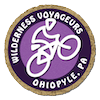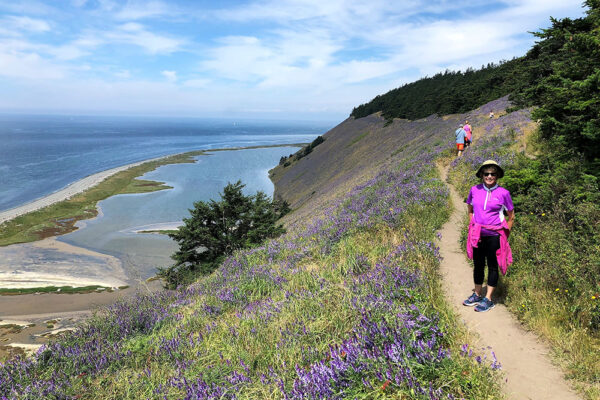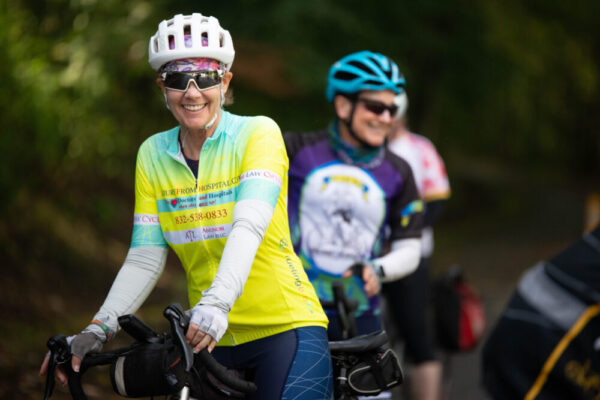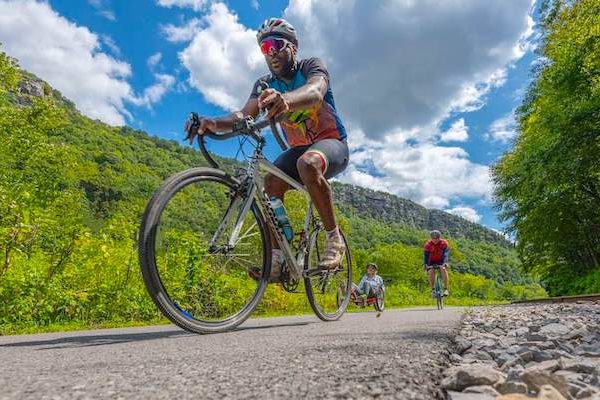
Packing for Your Bike Tour
When it comes to packing for your Wilderness Voyageurs biking vacation, there are often many questions. What is the best luggage to pack in? How much should I bring? How do I get it to fit? And so on and so forth.
We have put together this guide to help answer those questions and to help you pack efficiently. The goal is to pack to make sure you have everything you need without overpacking or bringing too much. After all, there is limited space in the trailer where the luggage is transported.
Watch the video and read the complete guide below for recommendations and packing best practices!
Choosing the Right Luggage
Our recommendation is a soft-sided, medium sized duffel or travel suitcase. A good rule of thumb is to keep your bag about the size of a standard carry-on you would use for plane or train travel. This is approximately 22 inches long, 14 inches wide and 9 inches high or under 50 liters.
Read More About Luggage
Additionally, you should bring along a small backpack to access throughout the day. You will see the support vehicle about every 15 miles during each ride, so you can use this daypack to store extra layers, wallet or other items you don’t necessarily need to carry on your bike.
If you plan on driving and extending your vacation, we recommend packing a separate suitcase for those extra days, if necessary. Please keep that bag in your own vehicle for when you return.
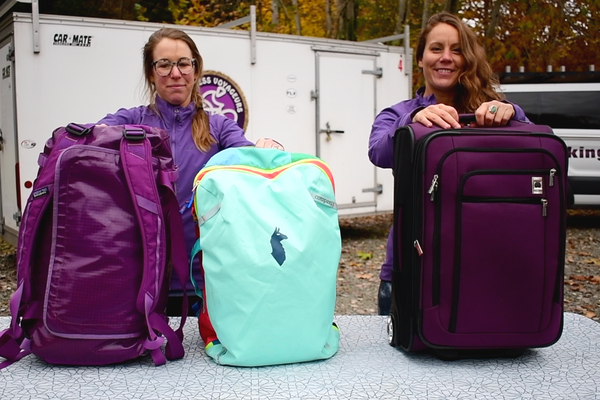
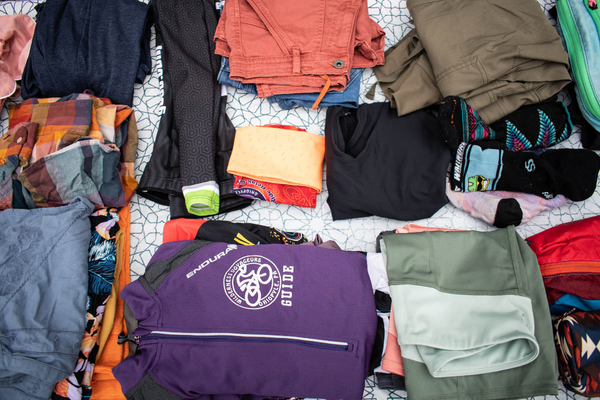
Minimal Packing, Maximum Use
To keep your packing as simple as possible, you want to think about how you can layer your cycling clothes and how you can re-wear your after-ride casual clothes. Keep an eye on the weather at your destination to add in any extra chilly weather clothing or accessories you may need.
Read More About Packing Clothes Efficiently
The best layering systems for cycling are lightweight and wicking base layers closest to your skin, mid-layers to keep you warm, and then an optional waterproof shell, or rain jacket, to keep you dry.
For your base layer, bring short and long sleeve biking jerseys or moisture wicking fabric shirts. A light to medium fleece is great for a mid-layer and packable rain jackets and rain pants are a must-bring for a waterproof outer layer. Even if the forecast looks clear, there is always a possibility of a stray rain shower here and there! Don’t forget non-cotton cycling socks as well.
Wool or synthetic materials are best; we don’t recommend cycling in cotton. Wool is naturally antibacterial and can be worn for multiple days in a row without smelling bad, which is a great way to keep your packing light and efficient. On the other hand, synthetics dry a bit faster and can be lighter than wool.
Once you have your laying system down, consider what you can wear more than once, what will be easy to rinse and if there are any items you definitely can’t use more than once.
If you tend to get cold easily and forecasted temperatures are below 65 degrees, make sure to pack heavier mid-layers to help you stay comfortable. For many spring and fall trips, the days tend to start out chilly, and become warm by the afternoon so it’s important to think about your layers. You can always shed and throw anything in the van during support stops.
Gloves, hats and socks may be key for days with changing temperatures. Cycling arm sleeves are a nice option for sun protection and as an item easily shed for a warm afternoon. They are lightweight, multi-functional and don’t take up much space
As far as casual clothing, it’s best to carefully plan mix-n-match items so that you can re-wear a few pieces throughout your trip. Just a couple of neutral pants, nice short and long sleeve shirts, and a sweater go a long way! And, of course, don’t forget your undergarments.
Depending on your tour, there may be laundry options. You can use your Ride with GPS Experience to see those options, and plan laundry days if needed. You can always plan to do a little hand wash if needed too.
We have laid out recommended quantities for each of these clothing items in your packing checklist, so make sure you check those out!
Gear to Bring
There is a bit of gear to bring with you as well, but for the most part this gear is what you’ll actively use while biking and won’t be packed away in your luggage. If you are running out of space, it might be best to throw some of these items in your daypack.
Read More About Gear
If you are riding your own bike, please make sure you have a spare tube for your tires. If you plan to rent a bike through us, you may wish to bring clipless pedals and personal bike seat if that is what you prefer. The rental bikes have flat pedals, but our guides are happy to switch out pedals and seats. We have helmets available if you don’t wish to bring your own.
For biking accessories, we have several highly recommended items listed in your packing checklist, including items that help with navigating on your phone, like a small portable charger and phone handlebar mount. Other recommended items help you stay more comfortable while riding.
You may bring any additional accessories that you use on rides back home, like a bike computer, hydration pack, or mirror. These are entirely optional items, so these would be the first to go if your bag is getting too packed or heavy.
Refer to the full list of required, highly recommended and optional accessories in your packing checklist.
Personal Items
Last but not least make sure to bring along your most important personal items, like medication, glasses and deodorant just to name a few. We provide communal basic sunscreen, bug spray and hand sanitizer, so don’t worry about those.
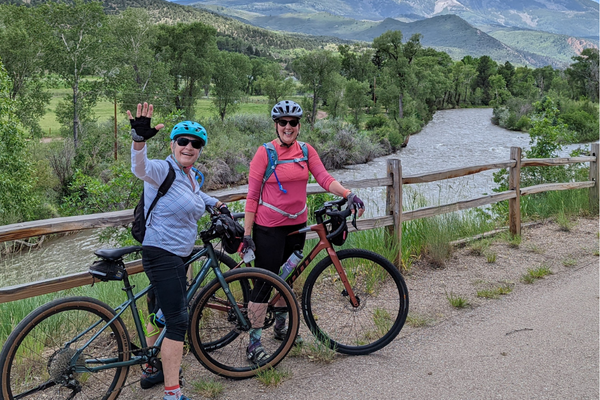
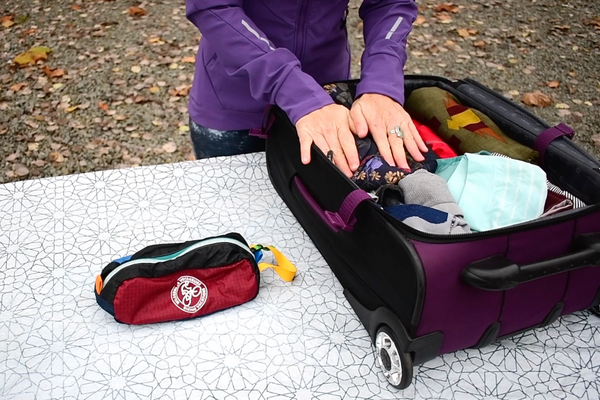
Getting it All to Fit
Now that your appropriately sized bag is packed to the brim, here are a few tips about how to make it all fit nice and organized. It’s kind of like playing a game of Tetris!
Read More About Organizing
First and foremost, lay out everything in front of you as you start the packing process. This allows you to truly see what you are planning to take and pare down anything extra. For instance, the one pair of slacks you plan to bring goes well with the three shirts, and even the sweater. So the second pair of pants really isn’t needed. Great for outfit planning to get multiple uses out of singular items, and keeping everything as minimal as possible.
One of our favorite ways to pack clothing is by rolling it into tight bundles. This helps maximize space and avoid wrinkles. Another great way is to use packing cubes to organize outfits, as well as compress the clothes a little bit.
Additionally, buy a dedicated toiletry bag that fits all of your essential personal items and fits neatly into your bag. This avoids important items being lost in the abyss of your luggage, and keeps them handy.
As we’ve stated, any gear that you will be regularly using during rides can go in your day backpack if you have run out of space in your luggage.
Once everything is packed, you are ready to hit the road for your biking vacation! If you have any additional questions, please refer to the packing checklist and don’t hesitate to reach out to your tour reservation specialists.
